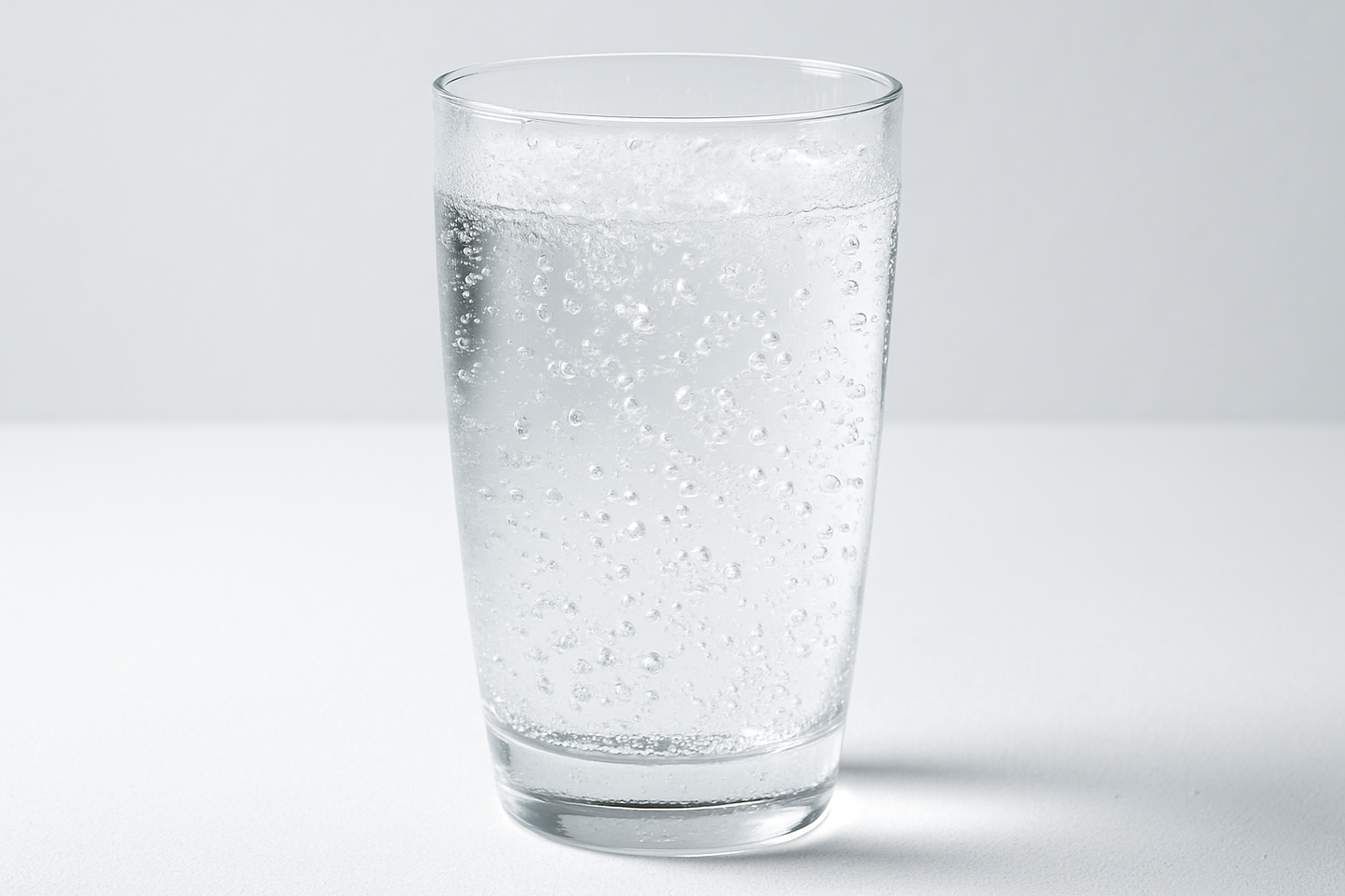
Daily Water Prep: Why This “Most Important Nourishment” Works
This article maps each step of the protocol to known physiology and frontier hypotheses so you can use it with precision, not folklore.
Step 1. Fill an Aarke bottle to the line with structured, mineralized water plus trace-mineral drops.
Step 2. Place in the freezer for 1–2 hours so it is very cold, not frozen.
Step 3. Carbonate with the Aarke, three firm pumps.
Step 4. Add ¼–½ tsp magnesium hydroxide (MgOH). If the gut tolerates it, work up to ½ tsp. Cap the bottle.
Step 5. Shake lightly, rest one minute, shake again. Store in the refrigerator overnight.
Step 6. If visible powder remains in suspension, add ⅛ tsp bicarbonate before refrigerating.
Step 7 (next morning). Shake again. Add ½ tsp bicarbonate, ¼ tsp sea salt, optional lemon juice, and 1 tsp SweetFx.
Intake. Drink ~700 mL gradually through the day for magnesium, minerals, and redox support.
pH check. Every few days, if urine pH is above 7.2 or below 6.2, adjust bicarbonate by ±⅛ tsp for one day, then return to ½ tsp when back in range.
Why this matters: interface water, minerals, CO₂, and buffering
At biological interfaces, water doesn’t behave like bulk fluid. Near membranes it forms ordered, nanometric layers governed by hydration forces (Israelachvili & Wennerström, 1996; Pertsin & Grunze, 1999; Ball, 2008; Nat Commun, 2024).
Real-world evidence that “treated” water affects organisms is still early, but animal and pilot data suggest daily consumption of water with altered hydrogen-bond networks can shift metabolic and oxidative markers (Tataranni, 2021; Korotkov, 2015).
On the mineral and buffer side, the physiology is clearer. Short-term ingestion of magnesium bicarbonate water in humans increases serum magnesium and urinary pH (Kozisek, 2010). Bicarbonate-rich mineral water also improved lipid and acid-base balance (Schoppen et al., 2013; Streppel, 2024).
Bicarbonate itself is a well-studied extracellular buffer. Meta-analyses show oral sodium bicarbonate improves performance by delaying acidosis (McNaughton et al., 2021).
The interface-ordering and buffering evidence is strong. Claims about persistent, drinkable “structured water” producing large systemic effects are contested; if you reference them, frame as hypotheses, not certainties (UNSW, 2022).
The addition of SWEETFX makes this concoction even smarter and stronger!
How each step maps to physiology
Step 1: Mineralized, coherence-friendly water
Membrane-adjacent water layers are sensitive to ionic composition. Kosmotropic ions like magnesium and bicarbonate favor tighter hydration shells (Israelachvili).
Step 2: Chill, don’t freeze
Lower temperature promotes tighter hydrogen bonding. Hydration and membrane state are temperature-dependent (Laage, 2016).
Step 3: Add CO₂
Dissolved CO₂ contributes to the carbonate–bicarbonate equilibrium, the same system used to regulate blood pH. Bicarbonate loading is proven in performance physiology (McNaughton, 2021).
Step 4: Magnesium hydroxide
Magnesium is central to ATP production. Delivered as Mg(OH)2, it contributes Mg2+ and buffering. Human trials confirm magnesium bicarbonate water shifts pH and magnesium status (Kozisek, 2010).
Step 7: Morning bicarbonate + salt
Adding bicarbonate and sodium supports extracellular volume and steadier pH. Studies on bicarbonate-rich waters and supplementation confirm these shifts (Schoppen, 2013; Streppel, 2024).
Evidence map in plain language
Interfaces: ordered hydration layers are measured (PMC1562391, Nat Commun 2024).
Mineral–buffer pair: magnesium bicarbonate water increases serum magnesium and urinary pH (Kozisek, 2010).
Buffer performance: sodium bicarbonate improves acid load tolerance (McNaughton, 2021).
Exploratory: structured water trials show mixed outcomes; mainstream chemistry remains skeptical (Tataranni, 2021; UNSW, 2022).
